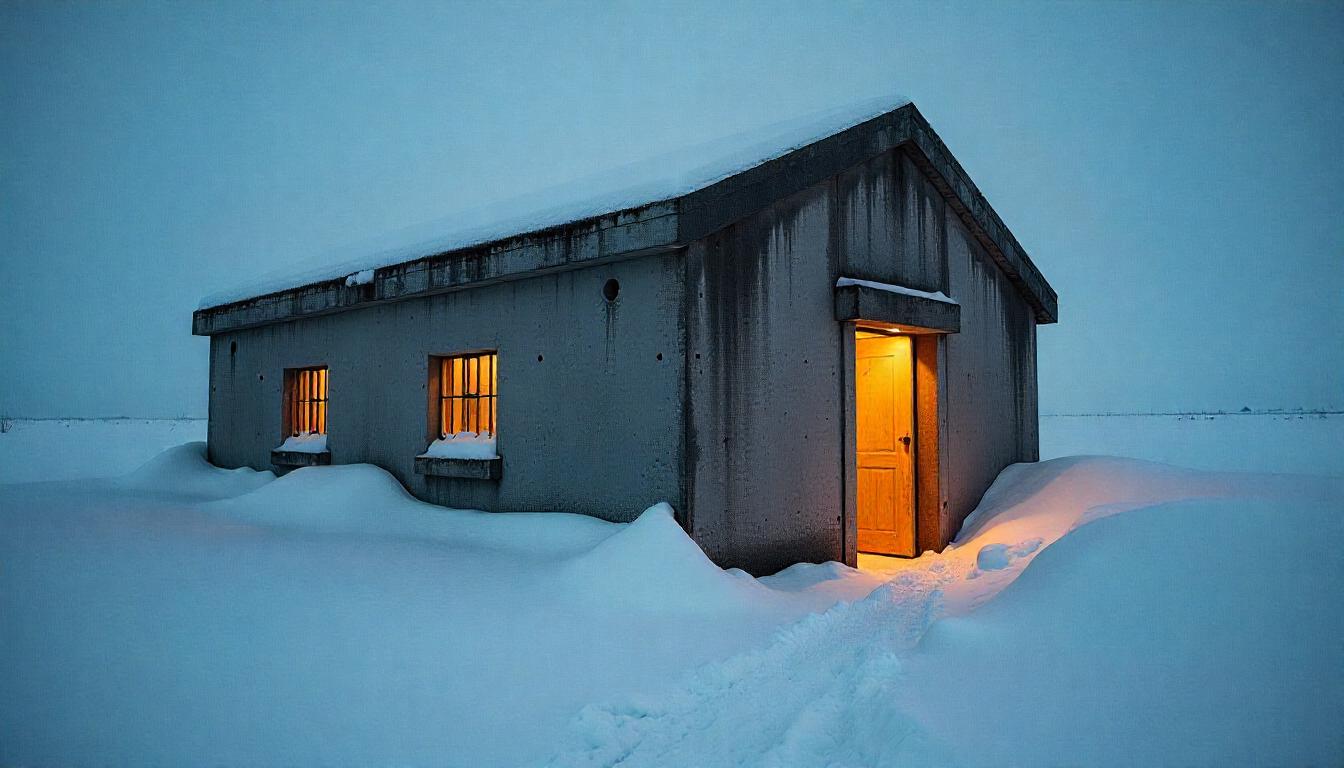The wind’s howling through the dead pine stands again tonight, same as it did the night the grid blinked out back in ’32. Here in the Granite Veil Range, I sit beneath twenty feet of reinforced earth and concrete—listening, waiting, preparing. My compound ain’t just a hole in the ground. It’s a living system, hardened and honed for the long silence after the last emergency broadcast. Out here, we don’t just survive—we refine.
If you’re reading this, you’re either smart enough to be prepping… or desperate enough to wish you had. Either way, pull up a chair, light that kerosene lamp, and let me walk you through what makes a better bunkr in the age of uncertainty.
1. Go Deep, But Not Too Deep
First off, let’s talk depth. Burying a shelter too far down might sound good on paper, but unless you’ve got a mining rig and a geologist on retainer, you’re asking for ventilation nightmares and potential collapse. My primary bunkr lies at a Goldilocks depth—22 feet below surface, reinforced with 12-inch poured concrete walls (3,000 psi mix), wrapped in a rubberized waterproof membrane, then backfilled with pea gravel for drainage.
The roof? Sloped reinforced concrete with an integrated earth berm—not just for camo, but for insulation and radiation shielding. I’ve also rigged a sacrificial layer of steel mesh on top. You’d be surprised what a well-aimed drone payload can do nowadays.
2. Air is Life: The Triple-V System
Forget water for a second—air is your number one priority underground. I use what I call the Triple-V system: Ventilation, Vacuum, and Vitiation Control.
- Primary airflow comes from a hand-cranked intake pipe with activated carbon and HEPA filtration. I scavenged an old Soviet NBC filter unit off a ham radio trader—rebuilt the bellows myself.
- Overpressure system rigged to maintain positive pressure inside. If you’re breathing, that means air is only going out—not letting in spores, gas, or fallout.
- And yes, we test air quality daily using a hacked Arduino with a suite of sensors: CO₂, particulates, VOCs, and rad levels. If the outside world’s gone bad, I want a thirty-minute warning.
3. Energy Independence = Operational Longevity
Solar still works—barely. But don’t bet the farm on it. I use hybrid generation:
- 4.2 kW solar array, mounted on a dummy ranch structure uphill from the bunkr. Tracked to the sun, but retractable into the roof in case of air surveillance.
- Wind turbine on a collapsible mast—set to only deploy above 20 mph winds.
- Backup diesel generator with a 2,000-gallon underground tank, pre-filtered and stabilized annually. I’ve built a secondary biogas digester—slow, but it’ll run the essentials if all else fails.
All juice feeds a 48V lithium iron phosphate battery bank, wired in a split-phase system for redundancy. EMP shielding? Naturally. All major circuits run through Faraday-shielded breaker panels.
4. Water: The Underground River and the RO Stack
Up here, we’ve got the luxury of a glacial aquifer running 80 feet down. I sunk a hand-dug well with a solar-assisted shallow piston pump. For purification, I use a three-stage reverse osmosis stack, plus UV sterilization and a ceramic gravity-fed unit for day-to-day sipping.
Every drop is tested. Twice.
When the water goes bad—and trust me, it can—you better not rely on chlorine tablets alone. I store 60 gallons per head in pressurized, food-grade steel drums. Rotate quarterly. Label everything.
5. The New Pantry: Beyond MREs
Don’t stock just calories. Stock resilience.
I’ve got 18 months of dry goods in sealed Mylar and oxygen absorbers—beans, grains, protein powder—but also:
- Hydroponic grow beds lit by full-spectrum LEDs, deep inside the bunkr. Leafy greens, cherry tomatoes, and medicinal herbs (you don’t want to need antibiotics when the nearest hospital’s a smoking crater).
- Mushroom farm in the old ammo room—King oysters and lion’s mane.
- Freeze dryer salvaged from a research lab, now repurposed for preserving rabbit meat and fresh greens.
Hunting still happens—but game’s thin these days. Best not count on it.
6. Security: Concealment, Not Conflict
The old-school mindset says you need a gun behind every wall. That’s true—to a point. But a better bunkr isn’t a warzone, it’s a ghost. My place blends with the ridgeline. Entryways disguised as broken shale. Passive infrared perimeter sensors. Seismic detectors made from modified geophones.
Yes, I’ve got steel doors, motion-triggered claymores (nonlethal, for now), and enough rounds to outlast a siege—but I don’t advertise. I practice defensive invisibility.
And if you do find me… odds are, I found you first.
7. The Human Element: Data, Discipline, and Dogs
You can’t live out here solo unless your head’s wired tight. Every day, I log weather, system stats, and radio chatter on my encrypted field journal (Raspberry Pi, hardened, no Wi-Fi). Discipline is routine—sleep, patrols, maintenance.
And don’t underestimate the power of companions. I’ve got two Pyrenean mastiffs—Vega and Morse. Better than cameras. Loyal, silent, and terrifying at 2 a.m.
Final Word from the Deep
You don’t build a better bunkr overnight. It takes years. Mistakes. Losses. Knowledge passed down from HAM operators, old Navy corpsmen, and YouTube channels that disappeared long before the net did.
But here’s the truth, friend: you don’t build it for the apocalypse you fear—you build it for the life you want to protect. Mine happens to be buried in a Montana mountainside, with frost on the windows and the scent of smoked venison in the air.


